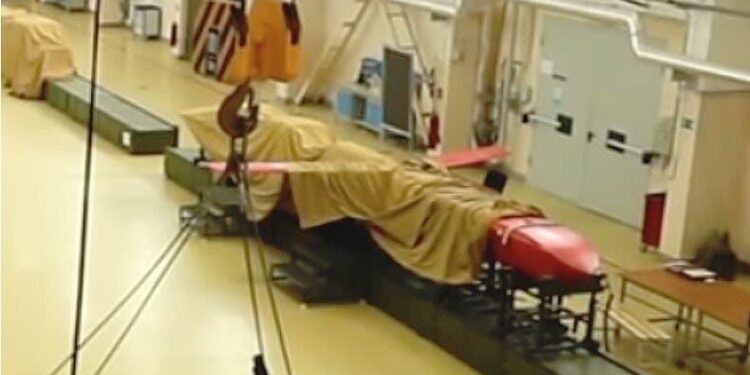Russia’s recent test of the Burevestnik missile has once again heightened global tensions amid ongoing geopolitical strife. The advanced nuclear-powered cruise missile, touted by Moscow as a game-changer in strategic deterrence, drew sharp criticism from international leaders. Former U.S. President Donald Trump characterized the test conducted under Vladimir Putin’s orders as “inappropriate,” emphasizing concerns over the destabilizing impact such developments may have on global security. This article examines the details of the missile test, international reactions, and the broader implications for arms control and diplomacy.
Russia’s Burevestnik Missile Raises Global Security Concerns
Global security analysts have raised alarms following Russia’s recent test of the Burevestnik missile, an experimental nuclear-powered cruise missile. This advanced weapon’s potential to travel long distances without refueling and evade traditional missile defenses poses a new strategic threat, complicating existing arms control regimes. Experts warn that the missile’s unpredictable flight path and extended range could undermine global stability and trigger an arms race among major powers.
In response, former U.S. President Donald Trump publicly criticized the test, labeling Russian President Vladimir Putin’s decision as “inappropriate”. The statement adds tension to the already strained relations between the two nations. Below is a summary of concerns and key features related to the missile’s impact on international security:
- Unrestricted range: Capable of global reach without mid-flight refueling
- Stealth capabilities: Difficult to detect with existing radar systems
- Environmental hazards: Nuclear propulsion risks potential radioactive contamination in case of failure
- Strategic instability: May erode existing arms treaties, including New START
| Feature | Potential Risk |
|---|---|
| Nuclear-powered engine | Environmental contamination |
| Long-range capability | Destabilizes missile defense systems |
| Flight path unpredictability | Challenges early-warning detection |
| Stealth technology | Increases first-strike potential |
Trump Criticizes Putin’s Test as Inappropriate Amid Rising Tensions
Former President Donald Trump has publicly condemned Russia’s recent missile test, describing it as a “highly inappropriate” move amid escalating global tensions. The test, involving the Burevestnik nuclear-powered cruise missile, has sparked widespread concern among international leaders due to its implications for strategic stability. Trump emphasized the need for dialogue over displays of military might, urging both Russia and the United States to pursue diplomatic solutions rather than provocative actions that could inflame existing conflicts.
Experts warn that the Burevestnik missile’s development represents a significant advancement in nuclear technology, potentially complicating established arms control agreements. The missile’s unique propulsion system allows for extended range and unpredictable flight patterns, making it difficult to detect and intercept. Below is a brief comparison highlighting key features of the Burevestnik missile alongside conventional cruise missiles:
| Feature | Burevestnik Missile | Standard Cruise Missile |
|---|---|---|
| Propulsion | Nuclear-powered | Jet or rocket engine |
| Range | Unlimited (theoretically) | Up to 1,500 km |
| Flight Path | Highly unpredictable | Pre-programmed, steady |
| Detection | Difficult | Easier |
- Diplomatic ramifications: Increased strain on US-Russia relations
- Security concerns: New challenges for NATO defense systems
- Arms control implications: Potential to undermine existing treaties
Experts Urge Diplomatic Engagement and Strategic Arms Control Measures
In response to the recent developments surrounding Russia’s Burevestnik missile, experts across the geopolitical spectrum emphasize the urgent need for renewed diplomatic dialogue. They warn that unilateral actions and provocative military tests risk heightening tensions and destabilizing fragile arms control agreements established during the Cold War era. Analysts advocate for transparency and confidence-building measures to prevent misunderstandings that could inadvertently lead to conflict escalation.
To address these challenges effectively, specialists suggest implementing a multi-layered strategy consisting of:
- Comprehensive verification frameworks for emerging missile technologies
- Institutionalized communication channels between Russia, the U.S., and NATO allies
- Regular strategic arms reduction talks focusing on non-nuclear capabilities
- Enhanced satellite and open-source monitoring to ensure compliance
| Suggested Measure | Goal | Expected Outcome |
|---|---|---|
| Diplomatic Summits | Renew trust between nations | Reduced risk of miscalculation |
| Verification Protocols | Increase transparency | Enhanced mutual accountability |
| Technology Exchange | Monitor new weapons’ development | Early warnings and risk mitigation |
Future Outlook
As tensions continue to simmer between the United States and Russia, the test of the Burevestnik missile underscores the ongoing challenges in arms control and international security. President Trump’s characterization of the test as “inappropriate” reflects broader concerns over the destabilizing potential of such weapons. Analysts will be watching closely to see how this development influences future diplomatic dialogues and strategic calculations on both sides.
















